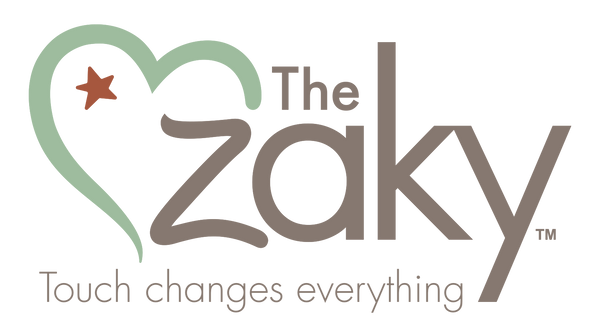In a matched cohort of very-low-birth-weight infants, UEs were associated with ∼1-week longer duration of mechanical ventilation, a 10-day increase in length of stay, and US$50 ,000 increased total hospital costs. (AAP Publications)
Preventing Unplanned Extubations (UEs) During Kangaroo Care (KC) in Neonates and Infants with The Zaky ZAK®.
Unplanned extubations (UEs) in neonates and infants during Kangaroo Care (KC) are a critical concern in neonatal and pediatric intensive care units due to their potential risks and complications.

1. Definition and Context:
- Unplanned Extubation: Refers to the accidental removal of an endotracheal tube (ETT), which is critical for neonates requiring mechanical ventilation.
- Kangaroo Care: Involves placing the diaper-clad infant on a parent's bare chest, providing numerous benefits for the infant's development and parental bonding.
- The Zaky ZAK®: A Kangaroo Care Safety Device designed for infants weighing 1-15 lbs, useful both in hospitals and for transitioning to home care.
2. Incidence:
- The incidence of UEs varies but is reported to be between 0.14 and 5.3 per 100 intubated days in neonates.
- During KC, the risk may increase due to movement and handling, infant sliding, or the parent falling asleep, even in the controlled and monitored environment of the NICU.

3. Risk Factors:
- Inadequate securing of the ETT.
- Increased infant movement and handling during KC.
- The experience level of staff and parents in performing KC with intubated neonates.
- Relying on the parent's hands for safety and stability.
- Parents moving or falling asleep during KC.
4. Consequences:
- UEs can lead to significant complications, including hemodynamic instability, increased respiratory support, airway trauma, hypoxia, bradycardia, increased need for reintubation, potential long-term developmental issues, and extended NICU stays.
- These events can cause stress, guilt, and anxiety for parents and caregivers, potentially pausing (or haulting) the KC program, decreasing parental confidence and satisfaction.
- Without the safety of The Zaky ZAK®, fathers may be more risk-averse and prefer delaying holding their infant until after extubation, loosing precious bonding and healing time provided by kangaroo care.
- Increased healthcare costs and resource use: In a matched cohort of very-low-birth-weight infants, UEs were associated with approximately a 1-week longer duration of mechanical ventilation, a 10-day increase in length of stay, and US$50,000 increased total hospital costs. (AAP Publications)
 5. Preventive Measures:
5. Preventive Measures:
- Apply a Risk Management Framework to Parent Sleep During Skin-to-Skin Care in the NICU
- Evaluate the current intubation protocol.
- Do not rely on the parent's hands for infant safety. Instead, use The Zaky ZAK® the evidence-based kangaroo care safety device to ensure proper posture, comfort. Click here for a 2-page PDF printable training. Click here for an instructional video
- Secure the ETT by using skin tape on the parent’s skin so that if the parent moves, the tube moves with them.
- Train and educate healthcare providers and parents on safe handling techniques and using The Zaky ZAK® for transfers and during KC.
- Continuous monitoring of the infant during KC by experienced NICU staff to promptly address any signs of ETT displacement.
- Implement protocols and checklists to standardize the process and reduce the risk of UEs.
6. Benefits of Kangaroo Care:
- By mitigating the risks of unplanned extubations to provide safe kangaroo care sessions, neonates experience an improved thermal stability, breastfeeding, enhanced parent-infant bonding, reduce mortality and morbidities, and improve sleep and neurodevelopmental outcomes.
- NICUs help mitigate the risks of UEs during kangaroo care by providing The Zaky ZAK as the safety tool for a more comfortable session, decrease the cost of care, and improve satisfaction of staff, parents, and infants.
In summary, while unplanned extubations during Kangaroo Care in neonates pose significant risks, implementing preventive strategies, evidence-based tools like The Zaky ZAK, and proper training can mitigate these risks, allowing for the continuation of KC's numerous benefits.
Contact us for more information or to start a trial.
Sources:
- Jeffrey M. Perlman et al., "Unplanned Extubations in NICUs," Pediatrics, 2017.
- Erin Keels et al., "Preventing Unplanned Extubations in the Neonatal Intensive Care Unit," Pediatrics, 2019.
- American Academy of Pediatrics, "Kangaroo Care for Neonates," 2020.
- Karen A. McGrath et al., "Unplanned Extubation in Neonates," Journal of Perinatology, 2018.
- Neonatal Network, "Preventing Unplanned Extubations," 2019.
- Julie K. Johnson et al., "Improving Patient Safety in NICU," Healthcare Safety, 2021.
- Ann M. Stark et al., "Risk Management in NICUs," Pediatric Health, 2020.
- World Health Organization, "Kangaroo Mother Care: A Practical Guide," 2020.
- National Association of Neonatal Nurses, "Best Practices in Kangaroo Care," 2018.
- American Academy of Pediatrics, "Outcomes, Resource Use, and Financial Costs of Unplanned Extubations in Preterm Infants," 2020
- JOGGN, Application of a Risk Management Framework to Parent Sleep During Skin-to-Skin Care in the NICU," 2022
